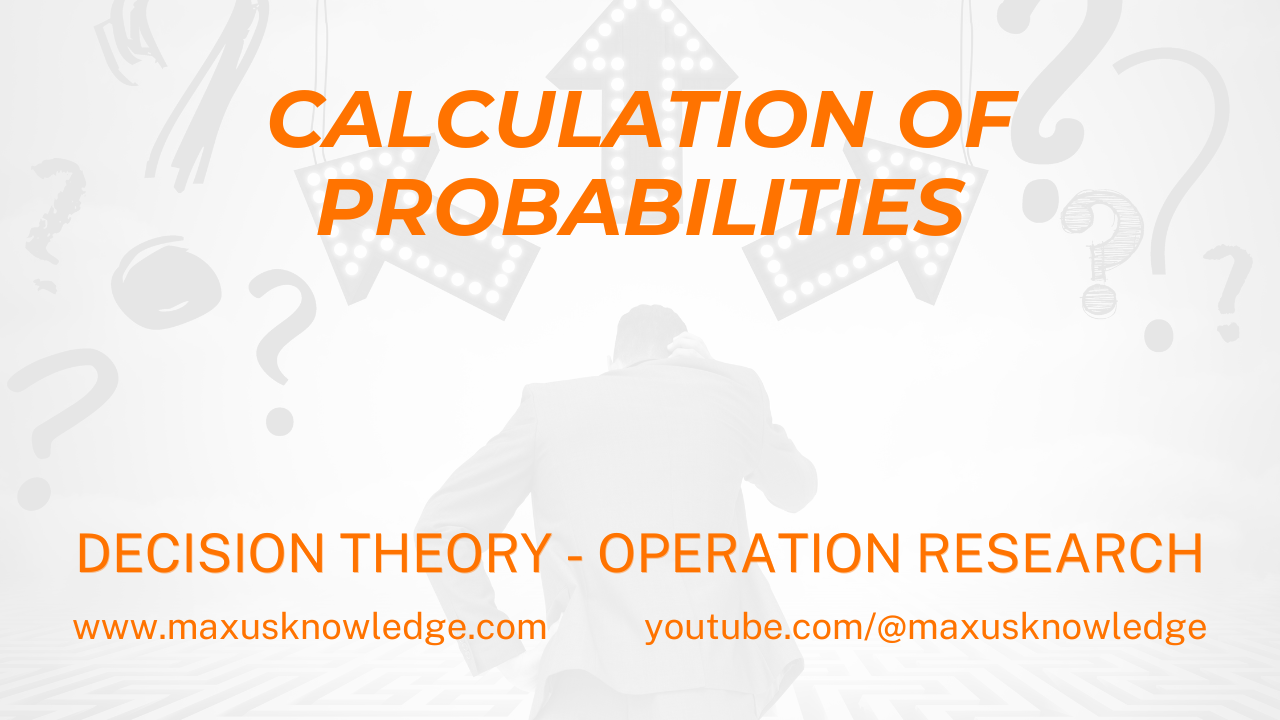To a great extent, success or failure that a person experiences in life, depends on the decisions made. So the question is, what is involved in good decision making?
Decision theory is an analytical and systematic approach to studying decision making. The use of different mathematical models can help you make the best decision. A good decision is one that is based on logic, data and facts, considers alternatives and qualitative approach.
Occasionally a good decision results in unexpected and unfavorable outcomes. But it is still a good decision. A bad decision is one, which doesn’t use any of the techniques. If the outcome is favorable, it is still a bad decision.
We can classify decision making into different models based on the ability to predict the consequence of each alternative.
- Decision making under certainty: It is known as the deterministic model. The decision maker knows the consequence of each alternative with certainty.
- Decision making under risk: The decision maker knows the probability of occurrence of each outcome.
- Decision making under uncertainty: The decision maker doesn’t know the probabilities of each outcome. E.g. success of a new product launch.
- Decision making under conflict: Situation where the consequence of each action of the decision maker is influenced by the opponent.
Decision making process under uncertainty:
A category where even the probabilities can’t be estimated. Such a situation occurs when there is no past experience or data to enable competitions of probabilities of these events.
Criterion to solve such categories of decision making:
- Maximin criteria
- Maximax criteria
- Hurwicz alpha
- Laplace criteria
- Regret criteria
Hurwicz criteria of decision making under uncertainty:
Maximax and maximin are the two extremes on the scale of optimism. Maximin represents pessimism and maximax represents optimism. Hurwicz introduced a coefficient of optimism called alpha. It can be used by decision makers to define the degree of optimism.
- 0 implies extreme pessimism
- 1 implies extreme optimism
- 0.5 implies neutralism
Hence, in this criteria, setting the value of is important to make a decision. Following are the 4 steps in Hurwicz criteria:
- To determine the largest and smallest payoff.
- To estimate the value of .
- Calculate expected value (EV) for each strategy.
EV = Mi + (1-)mi, where ‘Mi’ & ‘mi’ are the largest and smallest payoff respectively.
Laplace criteria of decision making under uncertainty:
Laplace criteria states that, if we don’t know of any reason for any one event to occur more than the other, we should assume that all events have an equal chance of occurrence.
Example: A manufacturer of laptops is faced with the problem of selecting one of the 2 models to be manufactured. Profit or losses expected by the management from the 4 different categories are as follows:
Market Acceptability | Profit | |
Model A | Model B | |
Excellent | 60000 | 78000 |
Good | 28000 | 30000 |
Fair | 18000 | 8000 |
Poor | 8000 | -12000 |
Which model should the company select?
For Model A, expected value = Mi + (1-)mi
Expected value = 1/4(60000 ) + 1/4(28000) + 1/4(18000) + 1/4(8000)
Expected value = 1/4 (60000 + 28000 + 18000 + 8000) = 28500
For Model B, expected value = Mi + (1-)mi
Expected value = 1/4(78000) + 1/4(30000) + 1/4(8000) + 1/4(-12000)
Expected value = 1/4 (78000 + 30000 + 8000 – 12000) = 26000
Since the expected value of Model A is greater, Model A is the optimal solution.
















